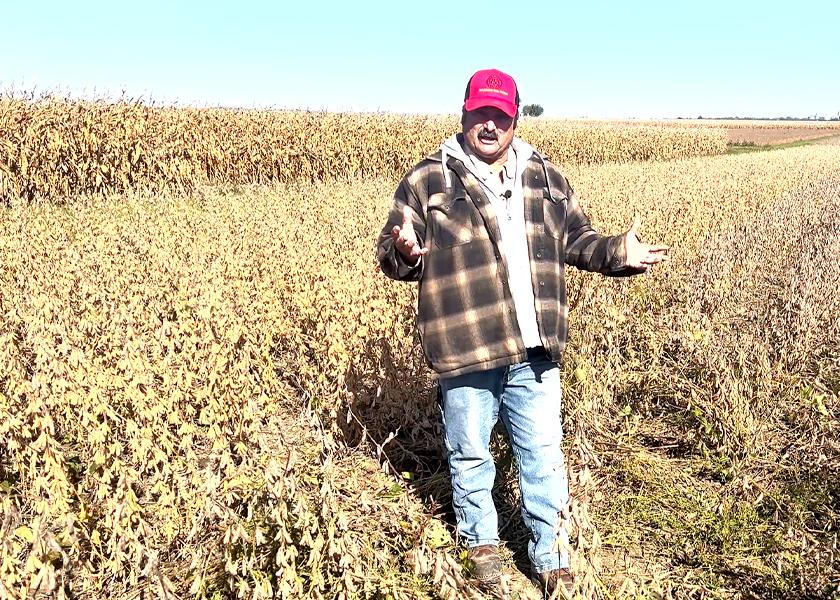Three Ways to Be a Successful Soybean Yield Sleuth

As you combine soybeans this fall, Ken Ferrie says to be on the lookout for wild yield swings that aren’t a result of soil type or your current weather conditions. The idea is to consider what happened this fall so you can adjust agronomic or management practices in the field to improve yield results next season.
“When you see yields dropping in an area, my recommendation is that's the time to stop the combine – while you have evidence to work with – jump out and take a look at that crop. Look at the good areas for yield and then compare that to the poor areas,” advises Ferrie, Farm Journal Field Agronomist and owner of Crop-Tech Consulting, Heyworth, Ill.
“Maybe drop some pins and make some notes to help us when we're trying to diagnose what's going on,” he adds.
Here are three specific considerations as you combine and identify problems:
1. Evaluate the soybean stand in your poor-yielding areas.

In this photo, for example, you can tell there is a large spot devoid of soybeans where Ferrie is standing—there are essentially no soybeans to harvest. Your first inclination might be to blame poor herbicide performance for the problem, because you likely will have weeds growing in that spot by this time of year. But look around the area and see if you identify any evidence of what happened.
“In this case, with the amount of holes I see in the ground, that would tell me we have a colony of thirteen-lined ground squirrels or voles that are taking the stand out,” Ferrie says. “Managing a varmint problem for next season is a lot different than if we need to adjust the herbicide, insecticide or some other product.
2. Check the soybean pod set.

In this example of soybeans that Ferrie is holding, you can see that the pod set is very poor. The nodes are set quite a ways apart and there are only one to two pods per node, which indicates early-season flowering stress.
“That tells us that this plant was stressed in the R1 to R2 phase,” Ferrie says. “Think about the kind of weather you had then and the quality of your herbicide application. But the most important thing for a combine operator to note is that these beans in this area are poorly podded. Take a picture of this problem so you have it to compare to a picture of pods in the good-yielding soybeans.”
Another thing Ferrie says to consider, per the pod set, is where the stress appears to have occurred on the plant.
If you’re seeing a loss, poor pod set or other stress at the bottom of the plant, the stress occurred earlier in the season. If it’s at the top of the soybean plant, the stress occurred later in the growing season.
3. If the pod set looks good, has a lot of clusters with three-bean and four-bean pods but the crop is still yielding a low number of bushels, then look for flat spots in the pods.

In this example of soybeans, Ferrie found flat spots and withered beans when he shelled the pods.
“In a situation like this the beans had a lot of good pod sets, but there are a lot of flat spots in these pods that didn’t develop into soybeans,” Ferrie says. “That's going to tell us that this had a later stress in that R4 up to R5 stage. The plant set the pod, it set the number of beans in the pod, but then it aborted that bean.”
However, when you see small or withered soybeans in pods, that means you had a stress in the R5 to R6.5 growth stage, at the very end of the season.
“The stress might have come from a drought that hung on and it caught the beans before they could finish. Or, it might be related to the soil type or a disease that killed the plant prematurely,” Ferrie says. “If we note that everything in the field looked the same – the crop cut like 75-bu. beans but they yielded 60 on the monitor – then we know the problem was bean size and that it showed up at the end of the season.”
Watch Ferrie’s complete Agronomic Minute on evaluating soybean yields and losses here:







